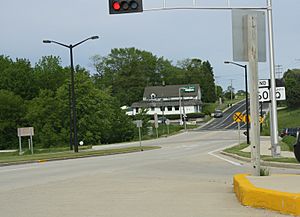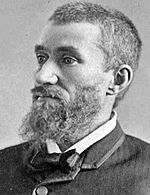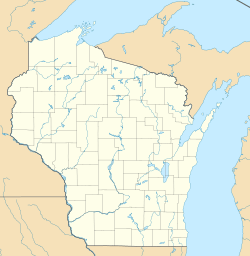Ulao, Wisconsin facts for kids
Quick facts for kids
Ulao, Wisconsin
|
|
|---|---|

Looking east at Ulao
|
|
| Country | |
| State | |
| County | Ozaukee |
| Elevation | 210 m (689 ft) |
| Time zone | UTC-6 (Central (CST)) |
| • Summer (DST) | UTC-5 (CDT) |
| Area code(s) | 262 |
| GNIS feature ID | 1577866 |
Ulao, Wisconsin (pronounced yoo-LAY-oh) is a small, unincorporated community in the Town of Grafton. It is located in Ozaukee County, Wisconsin, United States. The community sits at the crossing of Ulao Road and an old railroad line. This railway once connected the cities of Milwaukee and Green Bay. Today, I-43 runs close by, just to the west of Ulao. The Ulao Creek also flows through this historic area.
Contents
What's in a Name? The Origin of "Ulao"
The name "Ulao" has a few interesting possible origins. One idea is that it comes from the Spanish word Ulloa. This might have been chosen because a local veteran, Mr. Weber, fought in the Mexican–American War. During this war, U.S. troops captured a castle called San Juan de Ulúa in Mexico. The castle was named after a Spanish explorer, Francisco de Ulloa.
Other theories suggest the name came from a Native American leader. Some believe it's a changed version of a French general's name. There's even a story that the whistles of early trains sounded like "YOU LAY O" as they pulled into the Ulao station!
The Early Days of Ulao: A Port on Lake Michigan

Ulao was founded by an investor named James T. Gifford. He also helped start the city of Elgin, Illinois. In 1847, Gifford built a place called Port Ulao. This port was located on the tall clay bluffs overlooking Lake Michigan, east of where Ulao is today.
Back then, steamships were very common on the Great Lakes. These ships needed huge amounts of wood to burn for fuel. A single steamship could use as much wood as several acres of forest on just one trip! Much of the Grafton area was covered in thick forests. Settlers were clearing these trees for farming. Gifford saw a chance for Ulao to become a busy place where steamships could stop to refuel.
He built a sawmill to cut wood, a warehouse to store it, and a very long pier (about 1,000 feet) into the lake. Ships would dock there to buy wood. The clay bluffs along the lake are very steep, some as high as 140 feet. So, Gifford used a special chute to slide logs down to the pier for the ships.
In 1847, the government allowed Gifford to build a special road. This was a "plank road" made of wooden planks. It was planned to go from Port Ulao west to the Wisconsin River. Only about three miles of it were actually built. But this road, now called Ulao Road, became the basis for today's Highway 60.
In 1856, a group of eight people from the Strangite religious group moved to Ulao. They had to leave their home on Beaver Island in Michigan.
Ulao was quite successful in the 1850s and 1860s. It even had its own post office from 1850 to 1864. However, after the American Civil War, steamships started using less wood for fuel. Also, most of the forests in Ozaukee County had been cut down. This caused Ulao to decline, and much of its land was turned into farms.
Important Places in Ulao
- The Kevich Light is a notable landmark located in Ulao.
Famous People from Ulao

- Charles J. Guiteau lived in Ulao from 1850 to 1855. He was the son of the person who surveyed the land for Port Ulao. Guiteau later became known for a very serious historical event involving U.S. President James Garfield in 1881.



